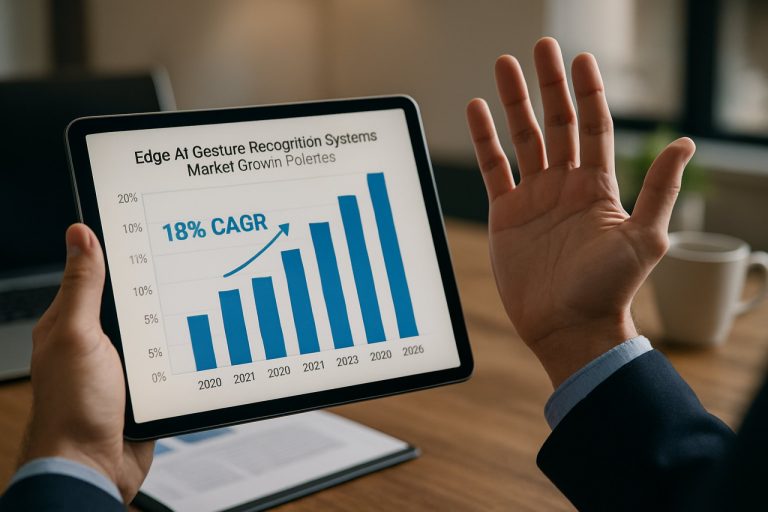
2025 Digital Photogrammetry for Geospatial Precision Mapping Market Report: Unveiling AI Innovations, Market Leaders, and Global Growth Projections. Explore Key Trends, Regional Insights, and Strategic Opportunities Shaping the Next Five Years.
- Executive Summary & Market Overview
- Key Technology Trends in Digital Photogrammetry
- Competitive Landscape and Leading Players
- Market Size, Growth Forecasts & CAGR Analysis (2025–2030)
- Regional Market Analysis: North America, Europe, APAC, and Rest of World
- Future Outlook: Emerging Applications and Investment Hotspots
- Challenges, Risks, and Strategic Opportunities
- Sources & References
Executive Summary & Market Overview
Digital photogrammetry is a transformative technology in the field of geospatial precision mapping, leveraging advanced imaging and computational techniques to extract accurate spatial information from digital photographs. As of 2025, the global market for digital photogrammetry is experiencing robust growth, driven by the increasing demand for high-resolution mapping in sectors such as urban planning, infrastructure development, environmental monitoring, and autonomous navigation.
Photogrammetry’s evolution from analog to digital platforms has significantly enhanced data acquisition speed, processing accuracy, and cost efficiency. Modern digital photogrammetry integrates with unmanned aerial vehicles (UAVs), satellite imagery, and artificial intelligence (AI)-powered analytics, enabling the generation of detailed 3D models and orthophotos with centimeter-level precision. This technological convergence is particularly valuable for applications requiring rapid, large-scale, and repeatable mapping solutions.
According to MarketsandMarkets, the global photogrammetry software market is projected to reach USD 1.2 billion by 2025, growing at a CAGR of over 14% from 2020. This growth is underpinned by the expanding adoption of geospatial data in smart city initiatives, disaster management, and resource exploration. Key industry players such as Hexagon AB, Trimble Inc., and Autodesk are investing heavily in R&D to enhance automation, cloud integration, and interoperability with GIS platforms.
Regionally, North America and Europe lead the market due to established infrastructure and regulatory support for geospatial technologies. However, Asia-Pacific is emerging as a high-growth region, fueled by rapid urbanization and government investments in digital infrastructure. The integration of photogrammetry with AI and machine learning is further accelerating the extraction of actionable insights from vast geospatial datasets, reducing manual intervention and turnaround times.
In summary, digital photogrammetry is set to play a pivotal role in the future of precision mapping, offering scalable, accurate, and cost-effective solutions for a wide array of geospatial applications. The market’s trajectory in 2025 reflects both technological advancements and the growing recognition of spatial data as a critical asset for decision-making across industries.
Key Technology Trends in Digital Photogrammetry
Digital photogrammetry has become a cornerstone technology for geospatial precision mapping, driven by rapid advancements in imaging sensors, automation, and artificial intelligence. In 2025, several key technology trends are shaping the capabilities and applications of digital photogrammetry in the geospatial sector.
- Integration of High-Resolution Sensors: The adoption of ultra-high-resolution cameras and multispectral sensors on aerial platforms, including drones and satellites, is significantly enhancing the accuracy and detail of photogrammetric outputs. These sensors enable the capture of finer ground details, supporting applications such as urban planning, infrastructure monitoring, and environmental management. Companies like Leica Geosystems and Phase One are at the forefront, offering advanced imaging solutions tailored for geospatial mapping.
- AI-Driven Automation: Artificial intelligence and machine learning algorithms are increasingly being embedded in photogrammetric workflows. These technologies automate feature extraction, object recognition, and change detection, reducing manual intervention and accelerating project delivery. For instance, Esri and Autodesk have integrated AI-powered tools into their geospatial software suites, streamlining the processing of large image datasets.
- Cloud-Based Processing and Collaboration: The shift toward cloud computing is transforming how photogrammetric data is processed, stored, and shared. Cloud platforms enable scalable processing of massive datasets, real-time collaboration among distributed teams, and seamless integration with GIS and BIM systems. Bentley Systems and Hexagon are notable providers of cloud-enabled photogrammetry solutions.
- Real-Time and Near-Real-Time Mapping: Advances in edge computing and data transmission are enabling near-real-time photogrammetric mapping, particularly for time-sensitive applications such as disaster response and construction monitoring. This trend is supported by the proliferation of UAVs and the deployment of 5G networks, which facilitate rapid data transfer and processing.
- Enhanced Accuracy through Sensor Fusion: The integration of photogrammetry with complementary geospatial technologies—such as LiDAR, GNSS, and IMUs—improves positional accuracy and reliability. Sensor fusion is particularly valuable for mapping complex terrains and urban environments, as demonstrated by solutions from Topcon Positioning Systems and Trimble.
These technology trends are collectively driving digital photogrammetry toward greater precision, efficiency, and scalability, reinforcing its role as a critical tool for geospatial mapping in 2025 and beyond.
Competitive Landscape and Leading Players
The competitive landscape of the digital photogrammetry market for geospatial precision mapping in 2025 is characterized by a mix of established geospatial technology firms, innovative startups, and strategic collaborations. The sector is witnessing rapid technological advancements, with companies focusing on automation, artificial intelligence (AI), and cloud-based processing to enhance mapping accuracy and efficiency.
Leading players such as Hexagon AB (through its Geosystems division), Trimble Inc., and Leica Geosystems continue to dominate the market by offering comprehensive photogrammetry solutions integrated with advanced sensors, software, and analytics platforms. These companies leverage their global reach and extensive R&D capabilities to maintain a competitive edge, frequently updating their product portfolios to address evolving client needs in urban planning, infrastructure, and environmental monitoring.
Emerging players such as Pix4D and Agisoft LLC are gaining traction by providing user-friendly, AI-powered photogrammetry software tailored for drone-based mapping and 3D modeling. Their solutions are particularly popular among small and medium-sized enterprises (SMEs) and academic institutions due to their cost-effectiveness and ease of integration with unmanned aerial vehicles (UAVs).
Strategic partnerships and acquisitions are shaping the competitive dynamics. For instance, Esri has expanded its photogrammetric capabilities through collaborations with hardware manufacturers and cloud service providers, enabling seamless integration of high-resolution imagery into its GIS platforms. Similarly, Autodesk has incorporated photogrammetry modules into its design and construction software, targeting the architecture, engineering, and construction (AEC) sectors.
- Innovation Focus: Companies are investing in AI-driven feature extraction, real-time data processing, and automated quality control to reduce manual intervention and improve mapping precision.
- Regional Competition: North America and Europe remain the largest markets, but Asia-Pacific players are rapidly expanding, driven by infrastructure development and smart city initiatives.
- Barriers to Entry: High initial investment in technology and the need for specialized expertise create significant entry barriers, favoring established firms and well-funded startups.
Overall, the 2025 market is marked by consolidation among major players, a surge in cloud-based and AI-enhanced solutions, and increasing adoption across diverse industries, intensifying competition and driving innovation in digital photogrammetry for geospatial precision mapping.
Market Size, Growth Forecasts & CAGR Analysis (2025–2030)
The global market for digital photogrammetry in geospatial precision mapping is poised for robust expansion between 2025 and 2030, driven by accelerating demand across sectors such as urban planning, infrastructure development, agriculture, and environmental monitoring. According to recent projections, the digital photogrammetry market is expected to reach a valuation of approximately USD 2.8 billion by 2025, with a compound annual growth rate (CAGR) estimated at 12.5% through 2030, potentially surpassing USD 5.1 billion by the end of the forecast period MarketsandMarkets.
This growth trajectory is underpinned by several key factors:
- Technological Advancements: The integration of artificial intelligence (AI), machine learning, and cloud-based processing is significantly enhancing the accuracy, speed, and scalability of photogrammetric workflows. These innovations are reducing operational costs and making high-precision mapping more accessible to a broader range of end-users Gartner.
- Proliferation of UAVs and Drones: The widespread adoption of unmanned aerial vehicles (UAVs) for data acquisition is transforming the geospatial mapping landscape. Drones equipped with high-resolution cameras and advanced sensors are enabling rapid, cost-effective, and high-precision data collection, fueling market growth Grand View Research.
- Government Initiatives and Infrastructure Investments: Increased government spending on smart city projects, transportation networks, and disaster management is driving demand for accurate geospatial data, further propelling the adoption of digital photogrammetry solutions Esri.
Regionally, North America and Europe are anticipated to maintain dominant market shares due to early technology adoption and significant investments in geospatial infrastructure. However, the Asia-Pacific region is projected to exhibit the fastest CAGR, attributed to rapid urbanization, infrastructure development, and supportive regulatory frameworks in countries such as China and India Fortune Business Insights.
In summary, the digital photogrammetry market for geospatial precision mapping is set for dynamic growth from 2025 to 2030, with technological innovation, drone proliferation, and infrastructure investments serving as primary catalysts for expansion.
Regional Market Analysis: North America, Europe, APAC, and Rest of World
The global market for digital photogrammetry in geospatial precision mapping is experiencing robust growth, with regional dynamics shaped by technological adoption, government initiatives, and industry demand. In 2025, North America, Europe, Asia-Pacific (APAC), and the Rest of the World (RoW) each present distinct opportunities and challenges for market participants.
North America remains the largest and most mature market, driven by significant investments in infrastructure, defense, and smart city projects. The United States, in particular, benefits from strong federal and state-level support for geospatial data initiatives, as well as a thriving ecosystem of technology providers and end-users. The presence of leading companies such as Esri and Hexagon further accelerates innovation and adoption. The region’s focus on disaster management, urban planning, and autonomous vehicle development continues to fuel demand for high-precision photogrammetric solutions.
Europe is characterized by a collaborative regulatory environment and substantial funding for cross-border geospatial projects. The European Union’s Copernicus program and the INSPIRE directive have established a strong foundation for data sharing and standardization, benefiting both public and private sector stakeholders. Countries such as Germany, France, and the United Kingdom are at the forefront, leveraging digital photogrammetry for environmental monitoring, infrastructure management, and agricultural optimization. The presence of established players like Leica Geosystems and Trimble supports continued market expansion.
- APAC is the fastest-growing region, propelled by rapid urbanization, infrastructure development, and government-led digital transformation initiatives. China, India, and Japan are leading adopters, with significant investments in smart cities, transportation networks, and disaster resilience. The region’s diverse topography and frequent natural disasters underscore the need for advanced geospatial mapping, creating opportunities for both local and international vendors. According to MarketsandMarkets, APAC is expected to register the highest CAGR in digital photogrammetry through 2025.
- Rest of the World (RoW) encompasses Latin America, the Middle East, and Africa, where adoption is emerging but uneven. Growth is primarily driven by infrastructure modernization, resource management, and environmental monitoring. Countries like Brazil, the UAE, and South Africa are investing in geospatial technologies, though challenges such as limited technical expertise and budget constraints persist. International development agencies and partnerships play a crucial role in market development across these regions.
Overall, regional market dynamics in 2025 reflect a convergence of technological innovation, policy support, and sector-specific demand, positioning digital photogrammetry as a critical enabler of geospatial precision mapping worldwide.
Future Outlook: Emerging Applications and Investment Hotspots
Looking ahead to 2025, digital photogrammetry is poised to play a transformative role in geospatial precision mapping, driven by rapid advancements in sensor technology, artificial intelligence (AI), and cloud-based processing. The integration of high-resolution satellite imagery, drone-based data acquisition, and real-time analytics is expanding the scope of photogrammetry beyond traditional surveying, unlocking new applications and investment opportunities across multiple sectors.
Emerging applications are particularly prominent in urban planning, infrastructure monitoring, and environmental management. Cities are increasingly leveraging digital photogrammetry for 3D city modeling, smart infrastructure development, and disaster resilience planning. The ability to generate highly accurate, up-to-date geospatial data supports more informed decision-making and efficient resource allocation. In agriculture, precision mapping enables optimized crop monitoring, irrigation management, and yield prediction, contributing to sustainable practices and food security initiatives. The mining and energy sectors are also adopting photogrammetric solutions for site exploration, volumetric analysis, and asset management, reducing operational risks and costs.
Investment hotspots are shifting towards cloud-based photogrammetry platforms and AI-powered analytics. Companies offering scalable, automated processing pipelines are attracting significant venture capital and strategic partnerships. For example, the adoption of AI-driven feature extraction and change detection is streamlining workflows and reducing manual intervention, making photogrammetry more accessible to non-expert users. The proliferation of affordable drones and the democratization of high-resolution sensors are further lowering barriers to entry, fostering innovation among startups and established players alike.
Geographically, North America and Europe remain at the forefront of adoption, supported by robust regulatory frameworks and strong demand from public and private sectors. However, Asia-Pacific is emerging as a high-growth region, fueled by large-scale infrastructure projects, urbanization, and government initiatives to modernize geospatial data infrastructure. According to MarketsandMarkets, the global photogrammetry market is projected to grow at a CAGR of over 12% through 2025, with significant contributions from these regions.
- Urban digital twins and smart city initiatives
- Automated asset inspection for utilities and transportation
- Precision agriculture and environmental monitoring
- Disaster response and climate resilience mapping
In summary, the future outlook for digital photogrammetry in geospatial precision mapping is characterized by technological convergence, expanding applications, and dynamic investment activity, positioning the sector for robust growth and innovation in 2025 and beyond.
Challenges, Risks, and Strategic Opportunities
Digital photogrammetry has become a cornerstone technology for geospatial precision mapping, offering high-resolution, accurate spatial data for sectors such as urban planning, agriculture, and infrastructure development. However, as the market matures in 2025, several challenges and risks persist, alongside emerging strategic opportunities for industry stakeholders.
Challenges and Risks
- Data Quality and Standardization: Ensuring consistent data quality remains a significant challenge. Variations in sensor calibration, flight parameters, and environmental conditions can introduce errors, impacting the reliability of derived geospatial products. The lack of universally adopted standards for data formats and processing workflows further complicates interoperability and data sharing across platforms and organizations (Open Geospatial Consortium).
- Processing Complexity and Resource Intensity: The computational demands of processing large volumes of high-resolution imagery require robust hardware and advanced algorithms. Small and medium enterprises (SMEs) often face barriers to entry due to the high costs associated with acquiring and maintaining such infrastructure (MarketsandMarkets).
- Regulatory and Privacy Concerns: The increasing use of drones and aerial platforms for image acquisition raises regulatory hurdles, particularly regarding airspace permissions and privacy protection. Compliance with evolving regulations, such as the EU’s General Data Protection Regulation (GDPR), adds complexity to project planning and execution (European Union Aviation Safety Agency).
- Skilled Workforce Shortage: The rapid evolution of photogrammetric software and hardware necessitates continuous upskilling. There is a notable shortage of professionals proficient in both geospatial science and advanced data analytics, which can slow project delivery and innovation (Geospatial World).
Strategic Opportunities
- Cloud-Based Processing and AI Integration: The adoption of cloud computing and artificial intelligence (AI) is streamlining photogrammetric workflows, reducing processing times, and enabling real-time data analytics. Companies investing in these technologies can offer scalable, cost-effective solutions to a broader client base (Esri).
- Vertical Market Expansion: Precision mapping is finding new applications in environmental monitoring, disaster management, and smart city initiatives. Tailoring solutions to these verticals presents significant growth potential (Gartner).
- Collaborative Ecosystems: Partnerships between technology providers, government agencies, and academic institutions are fostering innovation and addressing skill gaps. Open data initiatives and shared research platforms are accelerating the development of best practices and standards (U.S. Geological Survey).
Sources & References
- MarketsandMarkets
- Hexagon AB
- Trimble Inc.
- Phase One
- Esri
- Topcon Positioning Systems
- Pix4D
- Agisoft LLC
- Grand View Research
- Fortune Business Insights
- Open Geospatial Consortium
- European Union Aviation Safety Agency
- Geospatial World



